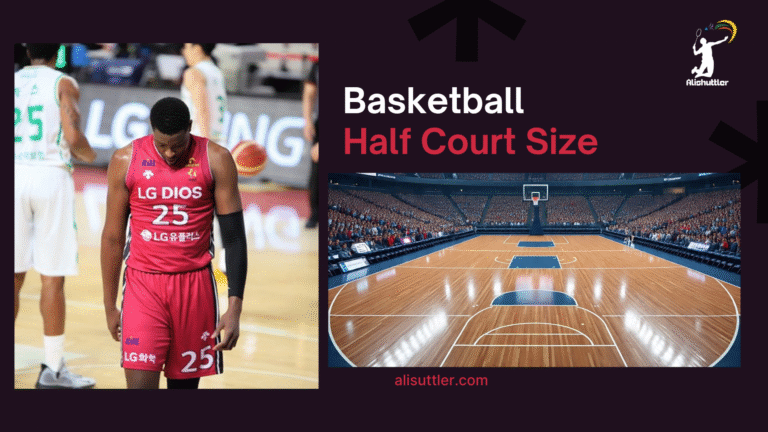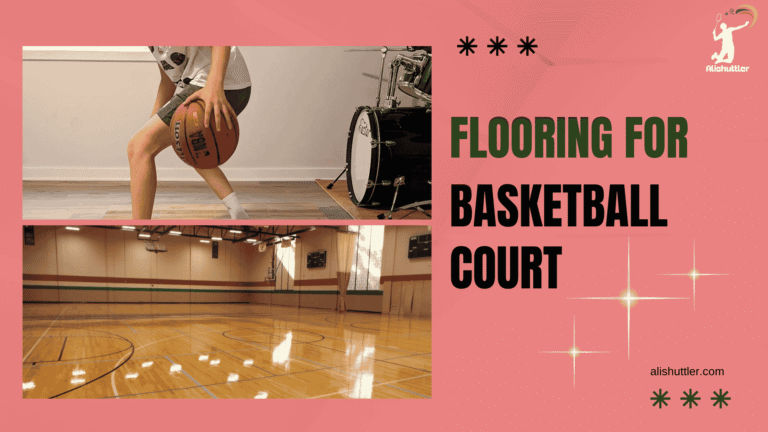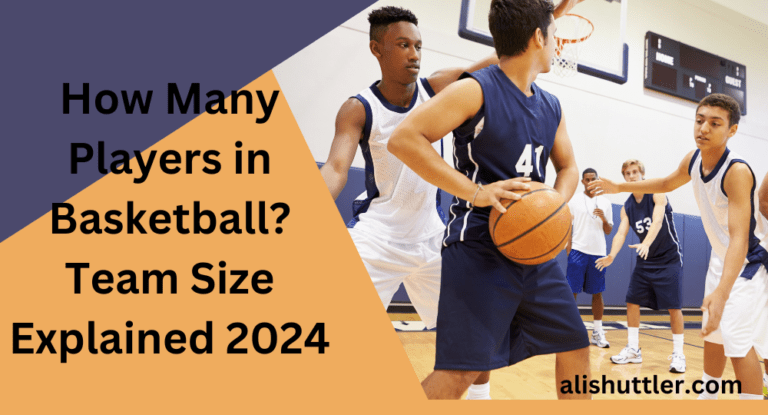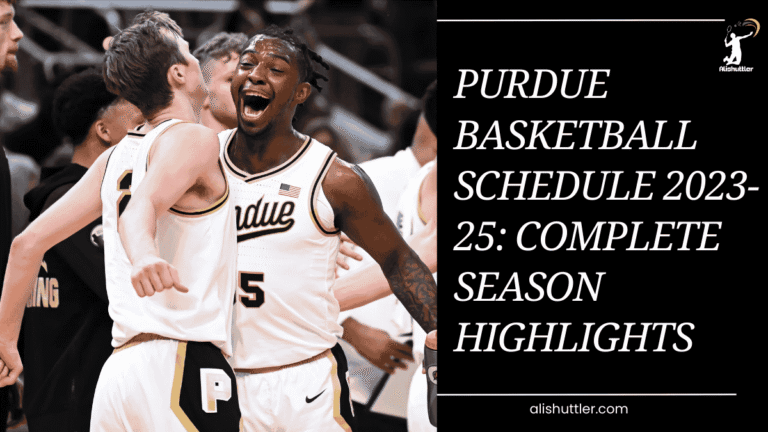Basketball arena lighting involves strategically installing lights so players can easily see the entire court. It improves the viewer experience by eliminating glare and shadowing that can obscure the action on the court.
Good lighting in basketball gyms or outdoor courts in the U.S. Often uses LED fixtures, set to cut shadows and keep the whole court bright. Proper basketball lighting ensures that games run efficiently, everyone is safe, and all municipal regulations for sporting facilities are followed.
Light levels can change greatly based on the court size, ceiling height, and whether the place hosts pro or school games. Picking the best lights means knowing what the space needs, what the users want, and how to save on energy bills.
The following section explains important specifications to look out for.
Why Court Lighting Matters More

Effective basketball court lighting goes beyond merely turning on a light; it significantly impacts player performance, game safety, and fan engagement. In places like Los Angeles, where basketball thrives from pro arenas to school gyms, implementing a modern led basketball court lighting system can transform the entire experience for everyone on and off the court.
Enhancing Player Visibility Always
Whether for amateur play or professional outings, clear vision is integral to ensuring fair play. In order for players to effectively track the ball, read defenders, and make quick moves, they need even, strong lighting. Shadows or dark patches disrupt players’ timing and result in missed plays.
Advanced LEDs are now able to keep colors bright and lines crisp, eliminating the confusion of players and refs alike. A solid checklist can help: check light levels, scan for shadows, review color clarity, and update bulbs as needed. This ensures that everyone is always sharp and focused, from warm-ups through overtime.
Prioritizing Safety On Court
Inadequate lighting creates dangerous conditions. Trips, falls, and collisions are more likely to occur when players are unable to see the court, markings, and one another. To ensure a safe game, courts must be lit in accordance with rigorous lighting standards and undergo regular inspections.
Most importantly, this should happen prior to significant tournaments. Preventative steps should involve regular inspections for flickers, replacing bulbs that are too dim, and ensuring exits and pathways are adequately illuminated. After all, a safe court is a fair court.
Boosting the Fan Experience
Fans are not only expecting a clearer view, they want to be more connected and immersed in the game. Uniform lighting illuminates every seat perfectly, creating an unforgettable experience. A lot of venues have LED effects or color washes for player intros, creating a buzz from the very beginning that sets the entire night apart.
Glare control, instant-on lights, and lighting fixture design all play a role in ensuring fans are able to see the action as it happens.
Our View: Good Lighting Wins Games
It’s not all about aesthetics, either. Teams can’t take to the court successfully if they’re playing in the dark. Fewer missed shots and turnovers. According to research, players miss fewer shots and commit fewer turnovers on well-lit courts.
With lights like these, outfitting court teams is a major investment. Not to mention fewer injuries, sharper calls from referees, and happier fans.
What Makes Lighting “Good”?
Just throwing in a lot of bright lights above the court doesn’t cut it when creating effective basketball court lighting solutions. It’s not just the technical aspects, but how those lights actually enable players to see, move, and react with fluidity. That ideal configuration delivers sharp contrast, consistent luminance, and an environment that plays and reads perfectly, match after match.
Lighting needs to provide both vertical illuminance and uniformity. Brightness ensures the outdoor basketball court area is thoroughly illuminated, and uniformity helps produce light distribution that is consistent across the surfaces. No one wants blaring shadows or glaring spots.
For indoor courts, horizontal light of at least 80 fc is effective. Televised events require even more—2,000 lux and higher—to fulfill broadcast requirements and thoroughly illuminate scenes while capturing every detail.
So of course quality of light is important. A high color rendering index (CRI), with 100 as the gold standard, allows players and fans to see colors in their true form. This contrast further enhances the visibility of uniforms, court markings and the ball.
Flicker rate must be below 0.3% to avoid visual strobe effects and allow for slow-motion replays. Energy efficiency and a long lifespan minimize costs and inconvenience. Good lighting, such as a premium LED light system, is lighting that will endure, use energy more efficiently, and be durable over time.
| Feature | Best Practice | Why It Matters |
|---|---|---|
| Brightness | ~80 footcandles | Clear vision for all activities |
| Uniformity | 0.7 or higher | Reduces shadows, evens play area |
| CRI | 80+ (100 best) | Accurate color, better perception |
| Flicker Rate | <0.3% | Smooth visuals, good for cameras |
| Color Temp | 4000–6500K | Sets mood, aids focus |
| Efficiency | High efficiency, long life | Cuts costs, less maintenance |
Meeting Basketball Lighting Standards
Lighting standards are the foundation of every properly managed basketball facility—from a local recreational gym to an NBA arena. These standards are a baseline for brightness, uniformity, and court safety for players and spectators. Following established standards helps ensure that games are competitive, safe, and fun for all participants.
When lighting is inadequate, the impact is clear. You suffer from compromised visibility, increased risk of accidents, and view games that do not comply with broadcast standards. In metropolitan areas such as Los Angeles, basketball is a huge part of the culture. Whether you’re illuminating a college, amateur, or professional venue — meeting these standards is paramount to meeting the demands of players, fans, and governing organizations.
Below is a summary of some key basketball lighting standards:
| Standard/Requirement | Value/Range | Notes |
|---|---|---|
| FIBA Class I (International/TV) | 150 footcandles (1,500–3,000 lux EH) | For pro/televised events |
| FIBA Class II (National/Regional) | 50–75 footcandles | Standard competitions |
| FIBA Class III (Recreational/Training) | 20–30 footcandles | Practices, amateur play |
| Intercollegiate Play | 80 footcandles | NCAA and similar |
| Horizontal Illuminance (EH) | 1,500–3,000 lux | Consistent court lighting |
| Vertical Illuminance (EV) | 1,700 lux avg. | Uniform player visibility |
| Flicker Factor for Broadcast | ≤ 1% | High-speed camera compatibility |
| Recommended Aiming Angle | 45° downward (max 60°) | Prevents glare, ensures coverage |
1. Following Official Guidelines Always
Official basketball lighting guidelines require minimum levels of illumination for courts based on the level of play. These standards are set by governing bodies like FIBA, the NCAA, and USA Basketball. Meeting these standards makes certain that each game is held under the exact same environment.
By removing bias, this approach facilitates player safety. If a venue does not adhere to these standards, they may face penalties, cancellation of games, or forfeiting certification for their events. These rules are constantly being updated. Inspect your lighting installation each season or prior to any big event to make sure you’re in the know!
Groups overseeing basketball lighting standards include:
- International Basketball Federation (FIBA)
- National Collegiate Athletic Association (NCAA)
- USA Basketball
- American National Standards Institute (ANSI)
Proactive inspections and maintenance of lighting systems is the best way to identify issues in advance and ensure that everything remains current and compliant.
2. Lux Levels for Different Play
Various levels of play require various lux levels. A typical practice or casual pickup games could easily be accommodated with much more rudimentary lighting. College and professional games, particularly those on TV, need significantly brighter, more consistent light.
For example, FIBA sets three classes, each with a specific light range:
- International/TV Games (Class I): 150 footcandles or 1,500–3,000 lux
- National/Regional Competitions (Class II): 50–75 footcandles
- Recreational/Training (Class III): 20–30 footcandles
- Intercollegiate Play: 80 footcandles
Plus, changing the lights based on the type of game or event helps everyone feel at ease and even addresses specific broadcast requirements. For high-profile games or broadcasts, then you will want to shoot for the upper end of these ranges.
Lux Level Recommendations:
- Practice: 200–500 lux (20–50 footcandles)
- Local games: 500–1,000 lux (50–75 footcandles)
- College/pro games: 1,000–3,000 lux (80–200+ footcandles)
- TV broadcasts: ≥1,500 lux, flicker-free, uniform
3. Achieving Proper Light Uniformity
Even light from sideline to sideline and baseline to baseline provides the best visibility for players to see the ball and each other clearly. Creating consistent light uniformity to meet the right uniform lighting, fixtures should be spaced evenly apart.
Finally, mount them at the desired height and angle to achieve the best results. Many gyms as far away as LA prefer ceiling- or wall-mounted fixtures like these. These fixtures are mounted at a 45° downcast to achieve an even lighting distribution across the playing surface.
When installing new or inspecting existing courts, walk the court and notice if there are dark shadows or overly bright areas. Fine-tune fixtures after initial installation to ensure all areas of the court are well-lit and visible.
Light Uniformity Checklist:
- Even fixture spacing along sidelines and end lines
- Aiming angle between 45°–60° downward
- No sharp shadows or bright spots
- Consistent light readings across the court
4. Minimizing Glare for Players
Glare is often the result of misdirected lighting fixtures, reflective gym floors, or incorrect fixture aiming. It can be dangerous, distracting players, disrupting their depth perception, and even inducing headaches. Minimize player glare.
Install all fixtures with diffusers to reduce direct glare into players’ eyes. Cover the lights to avoid direct sightlines and adhere to the recommended aiming angle of 45°. Floor materials with matte finishes are beneficial. Without the unnecessary glare, players can concentrate more and play more safely.
Glare Reduction Techniques:
- Use shielded or louvered fixtures
- Keep aiming angle under 60°
- Add diffusers or frosted covers
- Matte or low-gloss flooring
5. Flicker-Free Lighting Importance
Flickering fluorescence can lead to eyestrain, migraines, and even seasickness. Players of the game might be distracted, and action on video is stuttery—most notably in slowmo. For courts that are hosting broadcasts, a flicker factor of no greater than 1% is ideal.
Fortunately, most new LED systems meet this flicker-free standard while providing energy savings.
Advantages of Flicker-Free Lighting:
- Reduces eye strain and headaches
- Better slow-motion video for TV
- Fewer distractions for athletes
- Meets pro and TV rules
6. Considering Energy Codes Now
A good example is Title 24 in California, which limits the wattage lighting can consume. Upfront investments in LED lights, motion sensors, and smart control systems save money in the long run while exceeding code requirements.
These relatively inexpensive updates conserve energy, which save money and shrink a venue’s carbon footprint.
Energy Code Compliance Checklist:
- Use only approved, energy-rated fixtures
- Add occupancy or daylight sensors
- Set up dimming controls
- Review energy use each year
7. Safety Regulations to Know
Safety regulations exist to protect players and fans, so be sure to comply. Ensure that all wiring is neatly bundled and tightly secured. Make certain that fixtures are hung at a safe height and that emergency lighting is operational at all times.
Regular safety checks should be performed before each season or after any major alteration of the lighting.
Key Safety Regulations:
- Keep fixtures at safe heights
- Secure all wiring and mounts
- Test emergency lights regularly
- Use shatterproof covers on fixtures
Choosing Your Court Lights Wisely
Choosing the right lights makes a huge difference in helping your court serve its full purpose. They make the game more enjoyable for players and fans to watch. With the rapid advancement of lighting technology in just the last few years, it’s important to choose lighting wisely.
Selecting the right system involves more than just making the court brighter. Courts in Los Angeles, like those in other places, deal with sun glare and different local weather, so what works best is often determined by local conditions. Decisions vary based on the type of courts being installed, available budget, and what’s desired in terms of long-term usage. Here are some of the most important things to consider.
Why We Recommend LED Tech
Here are seven obvious improvements LED court lights provide. They use less energy—nearly 50% less than traditional, outdated lights, with equivalent brightness. Maintenance is simplified as LEDs last considerably longer than traditional lights—upwards of 50,000 hours.
Because they emit less heat, courts are cooler, too. LEDs further reduce glare, improving visibility for players and spectators alike. For indoor courts, a color temperature between 4000–5700K is ideal, while outdoor courts benefit from 5000–6500K. Here’s a quick list:
- High energy savings
- Long life span
- Less glare
- Bright, even light
- Lower maintenance
| Feature | LED Lights | Traditional Lights |
|---|---|---|
| Energy Use | Low | High |
| Lifespan | 50,000+ hours | 10,000–20,000 hours |
| Glare Control | High | Limited |
| Maintenance | Rare | Frequent |
Comparing Lighting System Costs
While LEDs are more expensive initially, they save you money long-term. Let’s break it down: A pro court needs 18–36 lights (200W–500W each), while a budget court uses 6–12 (200W–300W).
With LEDs, that translates into lower electric bills and the reduced need for replacements due to burnout. Traditional lights can appear low cost upfront, but ongoing bulb replacements and excessive energy consumption quickly become more expensive.
| Lighting Type | Initial Cost | Energy Cost (Yearly) | Maintenance |
|---|---|---|---|
| LED | High | Low | Low |
| Metal Halide | Medium | High | High |
| Halogen | Low | High | High |
Factoring in Long-Term Maintenance
Quality lighting solutions for an outdoor basketball court should be built to endure and require little maintenance. LED basketball court lighting systems excel in this area, as they result in fewer bulb changes and less downtime. It’s important to plan semi-annual dust inspections, wiring inspections, and aim checks to ensure optimal performance.
To reduce glare in your basketball court illumination, direct lamps at angles no greater than 60 degrees. Additionally, consider using anti-glare lenses or hoods to enhance the effectiveness of your outdoor basketball court lighting. Properly designed lighting layout contributes significantly to the overall quality of play.
Maintenance factors are crucial for the longevity of your basketball court light fixtures. Implementing a robust maintenance plan will ensure that your LED sports lighting remains functional and efficient, providing bright illumination for all players. This proactive approach will also help in maximizing available playtime and maintaining a safe environment.
- Lamp life span
- Cleaning needs
- Replacement time
- Ease of access
- Glare control
Energy Efficiency Equals Savings

When you go energy-efficient, you greatly reduce the operational costs of your facility. Energy-efficient lights LEDs are your best bet, with CFLs coming in second.
Design plays a big role as well—top mount or mixed lamp configurations diffuse light evenly. Install motion sensors or timers to prevent energy waste. Which means, for your televised games, you need 2000 LUX, but for the bulk of your games, you really only need 200 LUX.
Energy-efficient options:
- LED floodlights
- Solar-powered LED kits
- Motion-sensor systems
Designing for Peak Performance
In other words, lighting design directly affects how well players perform on the court. Equipped with the correct configuration, players can have clear vision, quick reaction time, and optimal concentration. Effective lighting goes beyond high luminosity—lighting that prioritizes balance, comfort, and adaptability.
For any court, from the neighborhood gyms of La La Land to the pros’ home turf, it’s all about the specifics.
Optimizing for Player Focus Fast
Rapid transitions between bright and dark environments can condition players to be focused and reaction-ready during various scenarios in a match. Flexible lighting lets coaches or facility managers change light levels fast—like turning up intensity for overtime or toning it down for practice.
LED fixtures integrated with wireless controls make this a no-brainer. To focus on the ball, fellow players, and the next play, players require constant, glare-free illumination. Customizing the preparation enhances attention for a free throw or nailbiter finale.
Strategies for Player Focus:
- Use fixtures with dimmable features.
- Keep uniformity ratio at 0.7 for even coverage.
- Adjust color temperature to 5000K for crisp visuals.
- Set up mobile controls for real-time tweaks.
Reducing On-Court Eye Strain
Related to glare, uneven lighting, or low color accuracy, visual discomfort like eye strain can have players squinting while on court. To avoid this, use light fixtures with a high CRI (90+) and stay within the 4000K–6000K range.
Brightness levels need to be appropriate to the level of play—500 lux for professionals, 200 lux for recreational games. The wide beam angles combined with high mounting height mean the light will be cast uniformly.
Checklist for Eye Comfort:
- Check for dark spots or harsh glare.
- Confirm CRI and color temperature specs.
- Make sure lights are spaced for full coverage.
Creating Game Day Atmosphere
Colorful, dynamic lighting can significantly enhance the atmosphere and excitement in the arena. Dynamic lighting, imagine color washes or moving lights, creates a buzz for player intros and halftime spectaculars.
These effects not only make games memorable for fans but can help energize the players as well.
Game Day Lighting Effects:
- Color-changing lights for team intros.
- Spotlights for key moments.
- Dimmable overheads for halftime shows.
Lighting for Better Broadcasting
To avoid those awkward shadows and grainy images, televised games require a powerful basketball court lighting system that provides uniform illumination. Uniformity helps cameras capture every play, while a high CRI ensures colors pop on screen, particularly with modern LED basketball court lighting systems that enhance the overall quality of the broadcast.
Lighting equipment and placement are crucial; fixtures should be mounted to eliminate potential shadows and positioned at the recommended wattage (100–400 watts) for sharp footage. Utilizing effective basketball court lighting solutions, such as LED flood lights, can significantly improve the lighting layout and enhance the viewing experience.
Broadcast lighting considerations also include ensuring that outdoor basketball court lighting is strategically placed to provide bright illumination. This is essential for maintaining visibility during televised games, where every detail matters for the audience at home.
- Uniformity ratio of at least 0.7.
- CRI of 90+ for color accuracy.
- No glare or flicker.
- Right light levels per broadcast standards.
Smart Lighting & Future Trends

Smart lighting is revolutionizing the design and operation of U.S. Basketball venues. These systems use wireless controls that link to cell phones or laptops. It staff can now quickly increase or decrease light levels and change timing with a few taps.
Adaptive lighting and smart controls aren’t just about adding more light. They improve court safety, improve energy savings, and provide fans a clear view of every game, shot, and dunk with reduced glare. New tech like LEDs, AI, and the Internet of Things (IoT) now shape the way arenas light up and save power.
Exploring Adaptive Lighting Systems
Exploring Adaptive Lighting Systems provides tangible value in basketball arenas. They adjust illumination levels according to training, game or event, optimizing visibility for athletes and reducing eye fatigue for spectators.
These kinds of systems are able to program lights based on day and night time, or even tailor it for local weather. In fact, some NBA arenas have adopted systems that dim arena lights between games to conserve energy and costs.
Good adaptive lighting systems provide wireless network control, scene setting, motion sensors and easy connections with other building technologies.
Benefits of Smart Controls Now
Now smart controls are often viewed mostly through a lens of automation. They save money by reducing energy at times where there’s no longer a need, automatically dimming brightness in accordance with the actual level of activity.
This produces significant cost savings while reducing energy expenditures. For players and fans alike, smart controls eliminate dangerous unexpected glare or blinding light.
- Real-time adjustment
- Energy savings
- Better comfort
- Easy scheduling
- Less wear on bulbs
Sustainable Lighting Solutions Grow
Sustainability is an important issue today. LED bulbs are at the forefront of this revolution, consuming significantly less energy and lasting longer. Sustainable lighting solutions minimize budgets and reduce environmental impacts.
Eco-friendly solutions are easier on the budget. Facilities are recyclers’ best practice. Facilities now use recycled materials, low-energy fixtures, timed schedules and motion sensors to minimize waste.
What’s Next in Arena Tech?
Arena lighting continues to make magical progress. AI and machine learning will soon predict when and how much light is needed based on who’s using the court.
Trends include:
- Smarter wireless control
- Voice-activated systems
- Greater energy tracking
- Seamless system links
| Traditional Lighting | Smart Lighting | |
|---|---|---|
| Control | Manual switches | Wireless/mobile, automated |
| Energy Use | High | Low (LED, sensors) |
| Lifespan | Shorter | Longer (LEDs) |
| Flexibility | Limited | High, with custom scenes |
| Integration | Standalone | Ties in with building systems |
Upgrading Your Existing Court

Upgrading to cool led basketball court lighting not only saves on energy costs but also enhances visibility. New LED lights offer a brighter, more vibrant color spectrum, allowing players to better see the court on and off. The transition to modern outdoor basketball court lighting is a game changer for performance.
Cost-effective upgrades are essential, as many older courts utilize metal halide fixtures that consume excessive electricity and have a short lifespan. Switching to led basketball court lighting is a no-brainer in terms of energy savings and longevity. For instance, a 100W-200W LED fixture can easily replace a 400-600W metal halide while providing the same level of illumination.
In the mean time, the same benefit as above applies when a 200W-400W LED replaces a 1000W metal halide. The drop in upkeep and lower energy costs can make a big difference for gyms, schools, and rec centers across Los Angeles.
Before initiating a basketball court lighting project, assess the current system. Evaluate the court’s size, ceiling height, and user requirements. High school gyms may require Class II levels (50-75 footcandles), while professional venues need Class I (150 footcandles).
Modern LED lights offer strong brightness and better color, with fixtures in the 100-400 watt range working well for most courts. LEDs can dim or run on schedules, so you use light only when needed.
Challenges of Retrofitting Lights
Challenges of Retrofitting Lights Existing wiring might not be compatible with new fixtures and even mounting points may not line up. Other courts require significant upgrades to comply with updated codes or the requirements of the sports.
Consulting with lighting professionals or electrical engineers will be wise at this juncture. They can identify problems and recommend solutions, such as different mounts or improved wiring.
Make sure you review code compliance, fixture compatibility and safe installation procedure before diving in.
Best Practices for Upgrades
Conduct a complete site analysis and engage in conversations with court users. Consider light levels, layout and spacing, and the type of technology currently installed. Involve all coaches, staff, and players when developing a plan.
Use these best practices:
- Review all specs and needs
- Pick LED fixtures for the right light output
- Plan for easy access for future upkeep
- Follow local codes and safety rules
- Train staff on new tech
Making the Switch Seamlessly
Making the Switch Seamlessly A successful transition begins with an effective strategy. Provide staff training on any new controls or dimming features.
To ensure play doesn’t get thrown off course, consider replacing lights one at a time or during non-peak hours if possible. Keep a checklist: confirm wiring, test all new lights, update schedules, and get feedback from users.
This assists in identifying any potential problems right away and ensures equipment operates efficiently.
Learning From Top Arenas

Lighting in the best college and professional basketball arenas in the U.S. Have established a standard that addresses both the practical and technical requirements. It’s their unique mix of design, technology, and a real focus on what players and fans are looking for.
These venues implement advanced lighting systems for the wide range of events hosted, from high school games to professional level matchups. By learning from their decisions, more intimate venues and universities can discover solutions that are applicable at all levels.
Key Lighting Design Principles
Principles of Good Basketball Lighting
Good tennis court lighting is informed by some guiding principles. Uniform light distribution prevents shadows and helps maintain player safety.
Illuminance needs to be appropriate for the level of play—professional courts often require 150-200 footcandles, while high school standards only require 30-75. Pole-mounted, overhead, and side fixtures further contribute a layer, combining brightness with coverage.
Accurate color rendering is key to allowing players to quickly identify the ball and court lines. Controlling glare, through measures like tilting lamps to under 60 degree angle, protects the experience of players and television cameras alike.
For instance, Los Angeles’ Staples Center employs mixed LED arrays to provide crisp clarity for HD telecasts.
Key Lighting Principles:
- Even, shadow-free coverage
- Right brightness for play level
- Good color rendering
- Controlled glare
Balancing Needs: Players vs Fans
Stakeholders from lighting manufacturers to architects to end users need lighting that performs for the athletes, while providing an enjoyable experience for fans. Players need clear, shadow-free vision while fans desire bright, fast action without blinding glare.
Top arenas benefit from LEDs that reduce glare and enhance color, thus creating an experience on game day that looks good in person and on TV. Venues such as Madison Square Garden employ dimmable systems to reduce illumination levels for concert or hockey setups.
Checklist for Lighting Design:
- Meets brightness standards for play and broadcast
- Reduces glare for audience comfort
- Adapts to event type
- Supports HDTV/4K visuals
Innovations Seen in Pro Venues
Today, LEDs are the standard in pro arenas. They produce 75% less energy, last 100,000 hours and save 75% in energy, saving money and carbon.
Advanced smart control allows staff to customize lighting for player introductions or energizing big plays. To accommodate production needs, arenas increase to 2,000 LUX for broadcast to align with TV standards.
Additionally, the Chase Center in San Francisco has utilized zoned LEDs to allow for instant scene change.
Notable Innovations:
- Zoned LED arrays
- Smart controls
- Broadcast-ready brightness
- Low maintenance, high efficiency
| Arena | Lighting Type | Key Feature | Player/Fan Focus |
|---|---|---|---|
| Staples Center | Mixed LED, Overhead | 4K/HDTV visuals | Both |
| Madison Square Garden | Adjustable LEDs | Event flexibility | Both |
| Chase Center | Zoned LEDs | Instant scene shift | Both |
Conclusion
With quality court lighting, glory doesn’t just glow—it guides players’ vision, facilitates speed, and maintains a killer instinct. Fans never miss another shot, referees never miss a call, and games played at night go off without a hitch. Choose the optimal configuration, you reduce shadows, glare, and increase play time dramatically.
From old gyms in small towns to big college arenas in the heart of LA, smart lighting shapes the game. Sometimes, just a handful of easy improvements can increase the quality and usability of a court. Looking for eye-catching games, audience-retaining crowds and less hassle for your crew? First, begin with the lighting. You can find excellent advice on selecting the right gear by diving into our buyer’s guides. Meet with local professionals to map out your next trip!
Frequently Asked Questions
What are the main benefits of proper basketball court lighting?
Proper basketball court lighting enhances player performance, minimizes accidents, and creates a more engaging experience for players and fans alike. Additionally, effective basketball court illumination aids in high-quality video recording and streaming.
What lighting standards should indoor basketball courts meet in the U.S.?
For high school gyms, the target illuminance is 80–100 foot-candles, while college and professional basketball courts often require upwards of 125–150 foot-candles of bright illumination, emphasizing the need for effective basketball court lighting solutions.
How do I choose the best lights for my outdoor basketball court?
Choose LED basketball court lighting fixtures specifically designed for sports. Compared to other options, these LED sports lights provide excellent uniformity of light, have a long service life, and are energy efficient.
Can I upgrade my old metal halide lights to LED?
Can I upgrade my old metal halide lights to a modern LED basketball court lighting system? LEDs drastically lower energy consumption, reduce heat output, and enhance light quality, making them an obvious option.
Do smart lighting controls make a difference for basketball courts?
On the surface, it would appear so. Smart controls give you the ability to change brightness levels, establish schedules, and remotely control the outdoor basketball court lighting system through a smartphone. This not only saves energy but also enables centralized management of effective basketball court lighting solutions.
What lighting designs do top Los Angeles arenas use?
Top arenas are installing modern LED basketball court lighting systems with sophisticated controls, seeking a high level of uniformity with no shadows, while meeting or exceeding NBA and NCAA lighting requirements.
How often should I maintain my basketball court lights?
Inspect the basketball court light fixtures every 6–12 months. Step 5: Clean the fixtures, replace any that flicker or dim, and inspect wiring for safe operation. Regular maintenance will ensure the outdoor basketball court lighting system functions properly and optimally.
